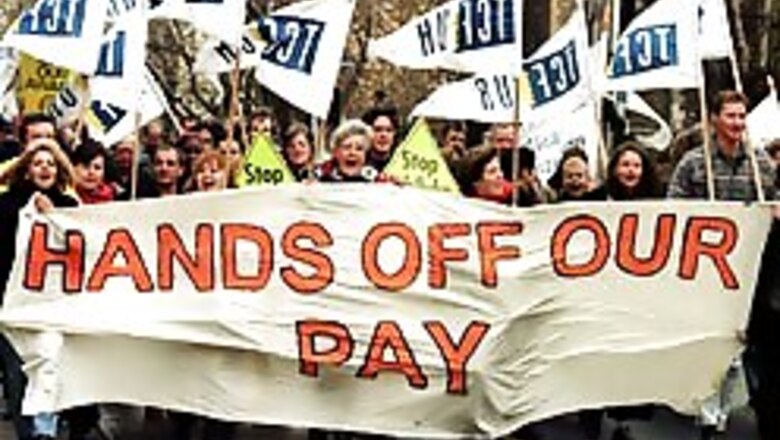
views
New Delhi: Bullying, mobbing, suicide threats, homicide, sexual harrassment, terrorism - sounds like a banana republic? Well, all this could just be happening in your workplace.
New types of violence at work are on the rise worldwide and has even reached epidemic levels in some countries, says a new study by the International Labour Office (ILO).
Violence at work could range from bullying, mobbing, sexual harassment, to threats by psychologically unstable co-workers and homicide.
The findings are based on a new study entitled ‘Violence at work’ - third edition by Vittorio Di Martino, an international expert on stress and workplace violence and former President of New South Wales Mental Health Review, Australia Duncan Chappel.
The study also says that the global cost of workplace violence is escalating due to absenteeism and sick leave.
"Today, the instability of many types of jobs places huge pressures on workplaces, and we are seeing more of these forms of violence," according to the authors of the study.
The study notes that professions like teaching, social services, library services and healthcare - once regarded as sheltered from workplace violence - are at equal risk of being exposed workplace violence, both developed and developing countries.
In developing countries, the most vulnerable workers include women, migrants and children, the report said.
In addition, the authors have also addressed growing concerns about terrorism, calling it "one of the new faces of workplace violence contributing to the already-volatile mix of aggressive acts taking place on the job".
The report says women represent approximately 61 per cent of all victimised workers because of their concentration in jobs considered high-risk for assault.
The study highlights a number of "best practice" examples from local and national governments, enterprises and trade unions from around the world that have successfully implemented "zero tolerance" polices and violence-prevention training programmes.
PAGE_BREAK
A 2000 survey of the then-15 Member States of the European Union showed that bullying, harassment and intimidation were widespread in the region.
- In Germany, a 2002 study estimated that more than 800,000 workers were victims of mobbing, that is a group of workers targeting an individual for psychological harassment.
- In Spain, an estimated 22 per cent of officials in public administration were victims of mobbing.
- In France, the number of acts of aggression against French transport workers, including taxicab drivers, rose from 3,051 in 2001 to 3,185 in 2002.
- In Japan, the number of cases brought before court counselors totaled 625, 572 between April 2002 and March 2003. Of these, 5.1 per cent, or almost 32, 000, were related to harassment and bullying, whereas, from April to September 2003 a 51,444 consultations requests, 9.6 per cent concerned bullying and harassment.
- In Malaysia, 11,851 rape and molestation cases at the workplace were reported between 1997 and May 2001.
- In South Africa, workers in the health care sector bear the brunt of workplace violence, according to the study.
Over one 12-month period, a survey showed nine per cent of those employed in the private health sector and up to 17 per cent of those in the public sector experienced physical violence.
On a more positive note, the study cited improvements in England, Wales and the United States.
In England and Wales, the estimated 849,000 incidents of workplace violence in 2002-2003, including 431,000 physical assaults and 418,000 threats, represented a decline from 1.3 million such incidents cited in a previous survey.
In the United States, where homicide is the third leading cause of death at work, the number of workplace murders has declined in recent years, with a similar trend for non-fatal assaults. The report says women represent approximately 61 per cent of all victimized workers because of their concentration in jobs considered high-risk for assault.
















Comments
0 comment